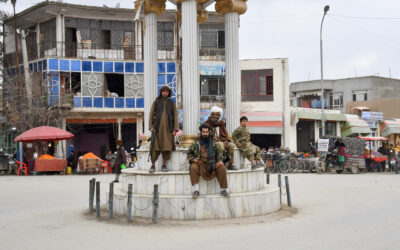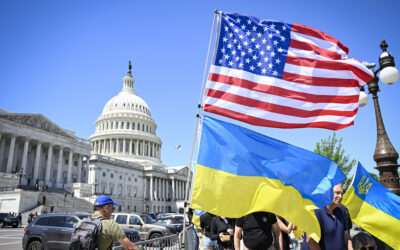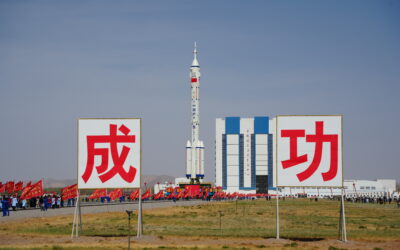
The Long Arm of China’s Security Services
SUBSCRIBER+ EXCLUSIVE REPORTING — When Chinese President Xi Jinping came to San Francisco last November to meet with President Joe Biden, Chinese pro-democracy activists in […] More
Saudi Arabia’s decision at the informal gathering of OPEC countries in Algeria on September 28th to reverse course and agree to participate in a production cut took markets by surprise. It immediately had its intended effect. The announcement made it risky for investors to short the market by selling oil on a deferred basis. Indeed, investor sentiment turned around overnight and the combination of “short-covering” – buying back borrowed securities in order to close an open short position – and a new wave of buying oil for future settlement put a new floor under prices. Oil was trading in a range of around $45 a barrel pre-Algiers, with sentiment arguing that prices could fall below $40. Post Algiers prices have traded above $50 with little fear of a new price decline.
Before the Algiers meeting, investors were bearish and helped push down oil prices below where they otherwise might have been. Now, while market sentiment remains skeptical about a binding OPEC agreement being reached when the organization convenes in Vienna on November 30th, it appears too risky to invest to express that bearish view. And that’s because the possibility of a production cut looks increasingly likely.
What’s responsible for this Saudi change in policy? Is it a strategic or tactical change?
It now appears that the Saudi change of tune was tactical. More tweaking of a policy that had been adopted in 2014 and appears to be here to stay. This new policy is partly a reflection of “lessons of history” and partly an assessment that today’s market dynamics are very different from those that have prevailed since the start of the 1970s. For both reasons, a change in policy was required.
The lessons from history stem from what was learned in the last big bear market, one that was oversupplied due to investments that took place in a period of high prices. In the 1980s, Saudi Arabia tried to keep a floor under prices by restricting production on its own. The result was that its production level fell from over 10 million barrels a day in 1981 to under 3 million barrels a day in 1985. Meanwhile, prices fell and the Kingdom lost market share. It was not until 2015 that Saudi production again reached the level attained in 1981. That’s what led to this new approach not to relinquish market share in an oversupplied market.
However, Saudi Arabia went even further with its decision to increase market share in 2014. To be sure, Saudi Arabia was concerned about growing production from Iraq and Iran’s potential return to the market following the expected nuclear agreement with the UN and the lifting of sanctions. But the country’s major focus was the U.S., which in the early years of this decade had become the fastest growing oil producer in the world, with oil output exploding by 90 percent between 2010 and 2014. The Kingdom thought that increasing production would cause prices to fall, and that U.S. production growth would collapse because of the high decline rates associated with shale production in the U.S.
The Saudi calculation was wrong in two respects: U.S. shale production was more robust than had been predicted, and prices collapsed to a far lower level than the kingdom had predicted. Revenues in the Kingdom were also hit a great deal harder than had been forecast. So, by this summer, a policy that was designed to create a free-for-all among producers and had led to a refusal to even agree to a freeze in production at an OPEC meeting last April, was finally adjusted.
We believe the chances of an agreement to cut production at the next OPEC meeting are well above 50 percent. It is likely to be made credible by the actions of Saudi Arabia and its Gulf Cooperation Council (GCC) partners, Kuwait and the UAE, with a combined cut of over 600 thousand barrels a day. It also appears likely that Russia will contribute to this agreement with a cut of 150 to 200 thousand barrels a day. That should, in our judgment, be more than enough to encourage a drawdown in inventories, which have grown around the world, and keep prices firm. It is our view that the market really doesn’t need a cut, but that a freeze in production would also have worked, for even with a comeback in disrupted oil from Libya and Nigeria, markets appear to be tightening. By our calculations, there was a 330 thousand barrel a day stock draw during the quarter that just ended, in contrast to an average stock build in the third quarter from 2010 through 2014.
So, yes, it appears that the Saudis have changed their view. Part of this change seems to be the recognition that Iran, whose production has risen by around 800 thousand barrels a day in 2016, may have reached the limits of its production growth, and the same might be the case for Iraq. But there is no sign of this representing a wider strategic shift: quite to the contrary. The Saudis seem to be taking advantage of a seasonal shift in their own demand requirements at home, with winter burning of oil down by about 400 thousand barrels a day from the summer. More significantly, they now recognize that short-cycle shale oil in the U.S. can rebound once oil hits $60 per barrel, and the U.S. would once again reach a growth path of over one million barrels a day.
In short, the Saudis seem to be permanently relinquishing their role as ‘Central Banker’ to the global oil market – raising or lowering production to keep oil priced within a band – because they know that they cannot manage it. In a world where production can grow if the price is high enough, it’s better to keep their oil flowing so that if oil becomes a stranded asset, their asset won’t be the one stranded.
Related Articles

SUBSCRIBER+ EXCLUSIVE REPORTING — When Chinese President Xi Jinping came to San Francisco last November to meet with President Joe Biden, Chinese pro-democracy activists in […] More

SUBSCRIBER+EXCLUSIVE EXPERT PERSPECTIVE — More than two years after its withdrawal from Afghanistan, the U.S. still does not have a clear way forward in the […] More

SUBSCRIBER+ EXCLUSIVE REPORTING — Ukrainians greeted Saturday’s long-awaited House passage of $60.8 billion in aid with justifiable jubilation. For months, their soldiers, civilians, and political […] More

SUBSCRIBER+ EXCLUSIVE REPORTING — A race for control of space is underway, and just as on earth, the U.S. and China are the top competitors. […] More

SUBSCRIBER+ EXCLUSIVE REPORTING — For nearly a week, the Middle East and much of the world were on a knife’s edge, waiting for a promised […] More

BOTTOM LINE UP FRONT – Less than one week after Iran’s attack against Israel, Israel struck Iran early on Friday, hitting a military air base […] More
Search